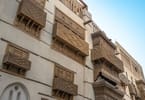Egypt’s Supreme Council of Antiquities (SCA), in collaboration with a Japanese-American mission, is carrying out a laser-scanning survey of the Step Pyramid of Djoser at Saqqara in an attempt to create a virtual three-dimensional model of Egypt’s oldest pyramid. This project is within the framework of the Egyptian Ministry of Culture’s and SCA’s commitment to protect and preserve Egypt’s cultural and archaeological heritage, said the Minister of Culture Farouk Hosni.
Dr. Zahi Hawass, secretary general of the SCA, considers the survey of Djoser’s pyramid to be an archaeological salvage project. The Step Pyramid was built during the reign of King Djoser of the Third Dynasty (c. 2687-2668 BC). It is the first pyramid in Egyptian history and also the earliest stone structure of its size. Over the years, the six steps of the pyramid have been exposed to natural erosion leading to its deterioration.
Hawass stated that this survey is being conducted in collaboration with a Japanese mission headed by Dr. Kosuke Sato of Osaka University and an American mission led by Dr. Mark Lehner, Director of Ancient Egypt Research Associates (AERA). This project intends on archaeologically documenting the Step Pyramid in order to greater understand its various stages of construction by using a variety of laser scanners including the Zoser Scanner, which was custom designed to scan the pyramid by Develo Solutions of Osaka, Japan.
Sato said that the Zoser Scanner, which is carried on the backs of professional climbers as they rappel down the faces of the pyramid’s six gigantic steps, uses infrared signals to gather coordinates and elevations of the thousands of points on the monument. The scanner gathers data at the exceedingly fast rate of 40,000 points per second in order to create a virtual three-dimensional model of the Step Pyramid, which will be a valuable reference for restorers, archaeologists, and architects involved in the restoration of the pyramid and for the continual monitoring of its condition. The laser scanning survey of the Step Pyramid will take four weeks to complete.
Some years back, antiquity teams in Egypt started a full and complete restoration of the Djoser Pyramid following three long years of comprehensive scientific and architectural studies. “The project marked the first complete restoration program done to rescue Djoser’s Pyramid (2687-2668 BC) and the southern tomb after the salvage operation carried out at the Abu Simbel temples,” added Hawass. Egyptian engineers and archeologists feverishly worked on it in an attempt to restore all features of the pyramid’s structure that was deteriorating.
The weakened facade led to the demolition and collapse of several blocks that once held together the different steps on the pyramid. Cracks showed on different sides of the queen’s subterranean corridors found beneath the pyramid’s burial chamber, as well as on ceiling and bas reliefs on the southern tomb. The project was carried out in three phases with a budget of LE 25 million (LE 5.85 about USD 1) in total.
The process included the cleaning of the pyramid’s six steps and the removal of dust and sand that has accumulated on them during the past decades. This reduced the load off the pyramid’s structure. Fallen blocks scattered on the ground around the pyramid were collected, restored and returned to its original location on Djoser’s Pyramid. Broken blocks were replaced with similar new ones after being subjected to a complete scientific analysis. This prevented the concrete from further crumbling off the face of the ancient pyramid. Empty spaces between blocks were re-filled with small fallen blocks.
All run-down corridors and ceilings of the pyramid’s burial shaft were consolidated with the new pieces. Engineer Abdel Hamid Qutub, head of the central administration of projects department at the SCA, insisted in using a high-tech system to control and supervise the movement and refilling of cracks found on the ceilings and corridors.
The group also used state-of-the-art technology with the removal of all salt accumulated on the pyramid’s internal bas reliefs, with strengthening the ceramic shreds that have eroded.
Today, they are scanning the newly-restored ancient structure, the father of all Egyptian pyramids that is much older than all the Great Pyramids of Giza.
WHAT TO TAKE AWAY FROM THIS ARTICLE:
- The scanner gathers data at the exceedingly fast rate of 40,000 points per second in order to create a virtual three-dimensional model of the Step Pyramid, which will be a valuable reference for restorers, archaeologists, and architects involved in the restoration of the pyramid and for the continual monitoring of its condition.
- Sato said that the Zoser Scanner, which is carried on the backs of professional climbers as they rappel down the faces of the pyramid's six gigantic steps, uses infrared signals to gather coordinates and elevations of the thousands of points on the monument.
- Egypt's Supreme Council of Antiquities (SCA), in collaboration with a Japanese-American mission, is carrying out a laser-scanning survey of the Step Pyramid of Djoser at Saqqara in an attempt to create a virtual three-dimensional model of Egypt's oldest pyramid.






















